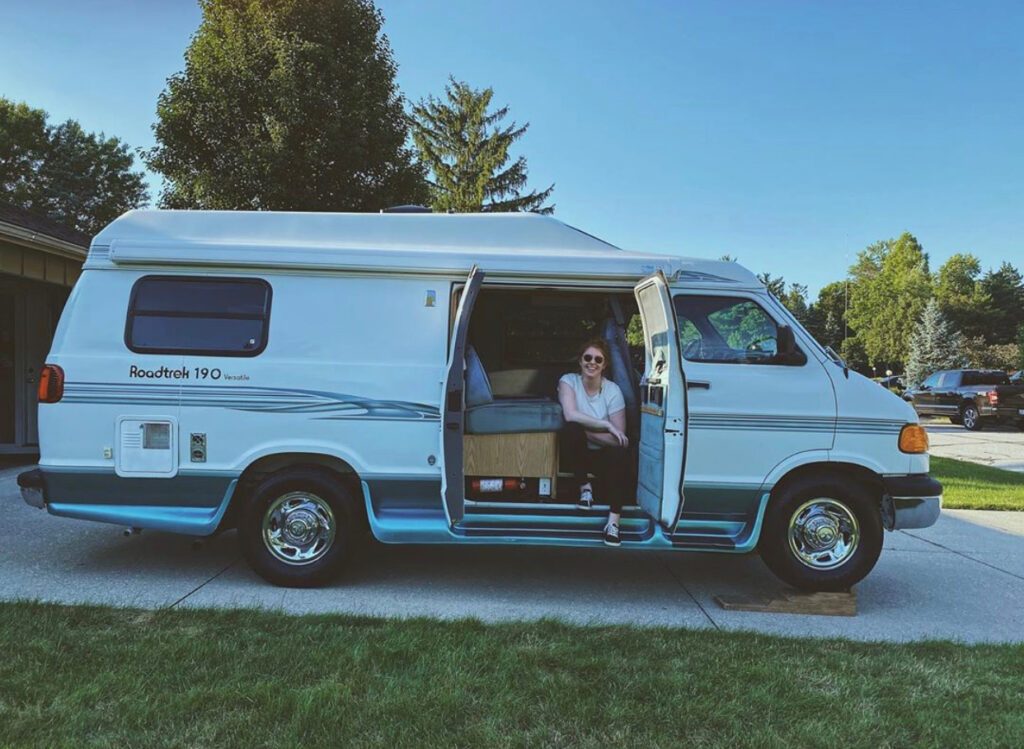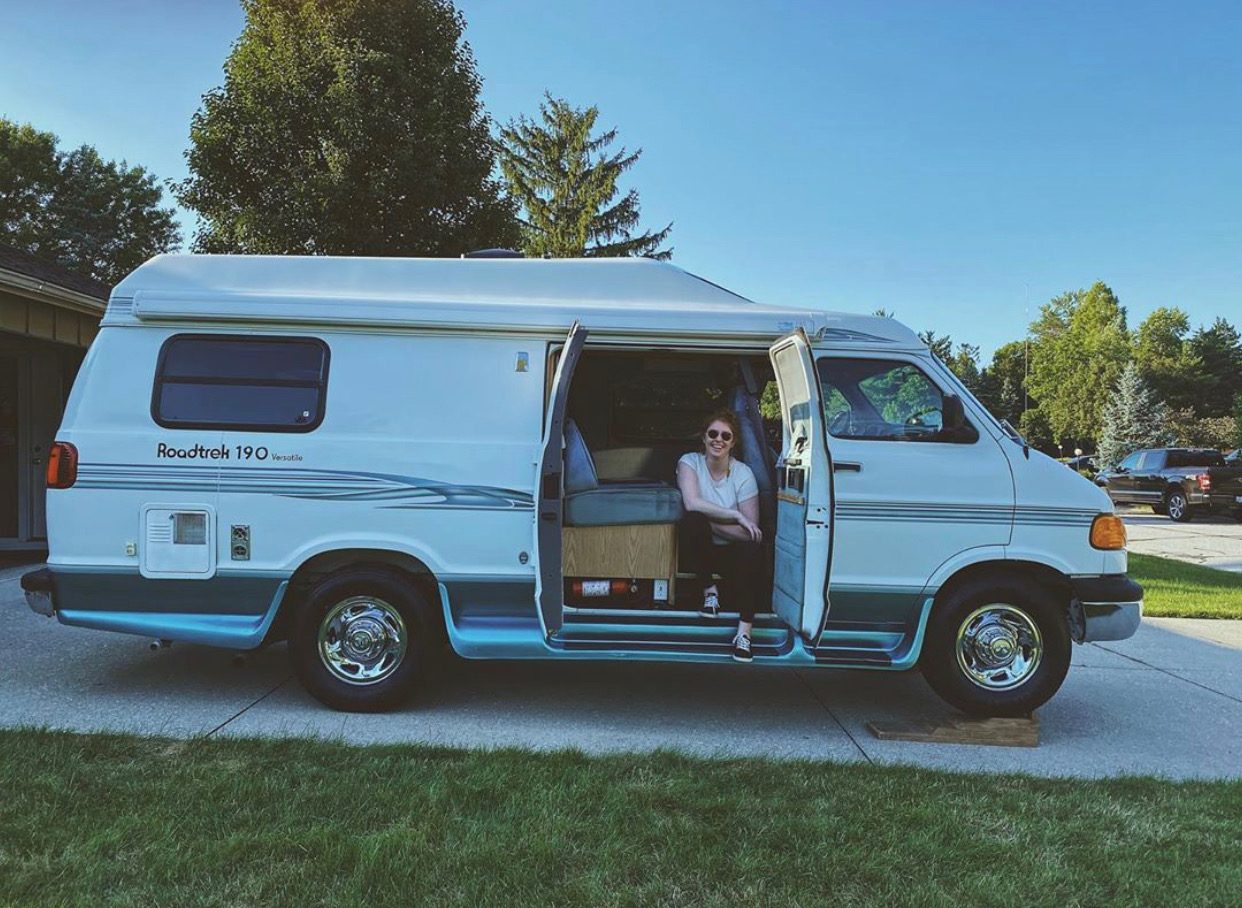How To Safely Level An RV, Camper, Trailer, Or Caravan
One of the questions that we get asked a lot here at Van Clan is how to level an RV, camper, trailer, or caravan. It’s a common problem, but there are lots of tricks that you can use to find a quick solution.
After a long day of exploring the wilderness, the last thing that you want to be doing is chasing your cup of coffee as it slides off your table, or fall out of bed while parking on an incline.
Good adventurers need good rest. Come to think of it, even people like me that want to sit and read a book in the sunshine need good rest too!
During the course of this article, I’m going to teach you everything you need to know about how to level an RV, including reasons that you might not have considered as to why it’s necessary to do so.
Best case scenario; you learn something that will help you to enjoy future road trips even more. Worst case scenario; you fall out of bed while reading this article because you’re on a slope.
Either way, I hope that I can help!
Featured Image Credit: bati_ontour
Tips & Tricks On How To Level An RV
Why Do I Need To Level An RV?
Let’s start with the obvious. Parking on a slope isn’t exactly an exciting experience. When I lived in my van in the city for 13-months, there were occasions when I couldn’t find anywhere else to park apart from a hill next to a college.
You quickly learn that not parking on a level surface isn’t a good idea when you get out of bed to go to the toilet in the middle of the night and your legs don’t stop until you hit the sink.
Thankfully, those days are behind me, and I use the tips and tricks that I’m about to share with you in this article to make sure that I don’t have vegetables rolling around as I’m trying to chop them.
There are other more important reasons why you should always level an RV, but we’ll come on to those soon.
Camping On a Campsite
In most cases, campsites will have the necessary tools in place to make sure that you can get a good night’s sleep without any problems. Many campgrounds provide tarmacked lots that have been levelled out, leaving you to park up and kick start your weekend.
Other sites that are more rural or on mountains, however, may well have terrain that just can’t be flattened. That’s where you have to get a little hands on.
If you have a pick of the site, then choosing a plot that is flat would be an ideal way to go. Get out of your van and have a wander around to test the individual areas out before driving into them. Take a tennis ball with you and see how it rolls down the lot, that way you’ll know what to expect when you’re trying to slice an onion while cooking your evening meal.
Boondocking
You’re more likely to need to level an RV while boondocking or stealth camping in areas such as National Forest or other free-to-camp areas.
For many, myself included, this is a much better way to see the world and immerse yourself in nature. The trouble is that nature doesn’t think about you or I getting a nice relaxing sleep in a level van when it’s busy making landscapes or sprouting new trees.
The advantage with boondocking is that you don’t have designated areas that you can park in. It’s much easier to avoid bumpy areas or slopes and park somewhere that feels much more level.

Still, no terrain is ever perfect. Not unless you make it that way, of course. And no, I’m not talking about getting out a shovel and digging a nice driveway. I’m taking about bringing along some easy-to-use tools that will sort the problem out in a jiffy.
What Tools Will I Need To Level An RV?
Automatic
If you’re lucky enough to own an RV with self-stabilising suspension or electric levellers, then you’re probably wondering why you’ve spent this long reading an article about how to level an RV. To be honest, I’m wondering that too, but I’m not going to judge…
Campers and trailers that have electric levellers can adjust themselves accordingly, finding a straight, level surface on any type of incline (within reason, of course).
Manual
For many of us, including the ones that have made their own campervan conversions from work vans (check out some of these Mercedes Sprinter Conversions for some good ideas), we have to make do with levelling blocks and a spirit level.
Levelling blocks are basically raised plastic triangles a bit like a huge door stop. Some of them have a straight incline, and others have two or three level areas for your tyre to sit on up the length of the unit.
To stop your RV from rolling off the levelling blocks and you moving backwards down a slope into a pond while you’re sleeping, levelling blocks have a special surface that creates friction between their surface and the tread of your tyre. It’s very much like the surface on MaxTrax recovery boards.
How To Tell If You’re Level

The first step is to find a good camping spot. When you’re happy with the area, squat down and assess which tyres need levelling to give you a straight surface. It’s more than likely going to be the front tyres together or front and back wheel on either side. Either way, you shouldn’t need more than two blocks.
Once you’re happy and your blocks have been placed, gently find your bite-point and roll forward slowly onto your levellers, allowing the engine to carry you up. Whatever you do, don’t floor it and end up driving straight over your blocks. That could do a lot of damage to you and your van.
It’s a great idea to keep a spirit level on your dashboard. That way, you can check the bubble in the centre to see how level you are without having to get out of the van.
It’s mostly trial and error from this point out, but using your eye and a spirit level usually yields perfect results first time around. If you find that you’re simply not getting a straight reading from your spirit level after a couple of goes, then just find a different spot. There’s no point wasting too much time on a lost cause.
Do I Need Two People To Level An RV?
I’m going to be honest, it’s probably easier if you do have another person to help you level an RV. I’ve seen a lot of people ask other campers to ‘spot’ for them when they’re driving up onto their levelling blocks, giving the customary ‘WHOA!’ when they’re almost about to drive over the edge.
I have also seen people holding blocks in place by pushing against them with a long broom handle, or squatting down on the ground to check out the tyre placement while one person does the driving.
That being said, it’s not impossible to do if you’re a solo traveller. Providing you’ve had a bit of practice and you have your trusty spirit level to hand, there’s not much really that can go wrong (don’t sue me if it does go wrong though).
Can Not Being Level Cause Serious Damage?
Not having a level surface can do much more than give you a nasty shock when you jump out of bed and forget you’re on a slope. Not levelling an RV can lead to serious damage to your chassis and suspension, especially if you’re in one place for a long time.
Likewise, it can also cause excessive wear and tear to tyres that are taking the brunt of your vehicles weight. Put all of your weight on one leg while standing up for a couple of minutes, then imagine that the same thing is happening to your 3.5T camper. The last thing you want is a tyre blowing as you drive down the freeway.
If you don’t level an RV, then you also risk the chance of your vehicle slipping or sliding around, especially if there has been a lot of rainfall and you’re on a muddy surface.
Most importantly of all, however, parking on a slope can affect the performance of your refrigeration unit. If you have a built-in 12V fridge, then it won’t operate properly if you aren’t on a level surface.
The chemicals inside absorption fridges won’t run efficiently if you are on a slant. This could lead to problems and even your fridge breaking completely. 12V fridges are expensive, so look after the one you have.
How Do I Know If My Tyres Are Worn From Incorrect Parking?
You can usually tell if you have excessive wear on tyres by looking at the tread. In the UK, mechanics recommend that should check that you can fit a 20-pence coin in the tyre tread. You can do this with a 20-cent coin in the US or Europe too.
Look for any patches that show tyre fibres or where the tyre tread looks smoother. The general rule of thumb is that if you see a patch that looks different to the rest of the tyre or spot any signs of excessive wear, then put on a spare or change asap.
What If I Can Only Park On A Slant?
Always try to level an RV or camper when you can, but don’t start panicking about it every time you head out on the road. Burgers and fizzy drinks aren’t good for us all the time, but they are fine in moderation.
The same goes for your RV. Parking on a slant once in a while isn’t going to suddenly turn your camper into a pile of nuts and bolts, but just try to avoid it as much as possible.
If you can’t afford to buy levelling blocks, then you could always find a few strong pieces of wood and carry those with you. You could even make your own if you’re good at carpentry or have a 3D printer. Spirit levels are also quite cheap to buy, but you can make your own too if you want to save those pennies.
More Content From The
Van Clan Team!
- Check out how to stay organised while living off grid.
- Is Van Life for you? Read our article and find out!
- These are the van life costs that I incur every month.
- Join the Van Clan on Facebook, Twitter, and Instagram!




COMMENTS
Please note that all comments will be checked by our team before being approved.